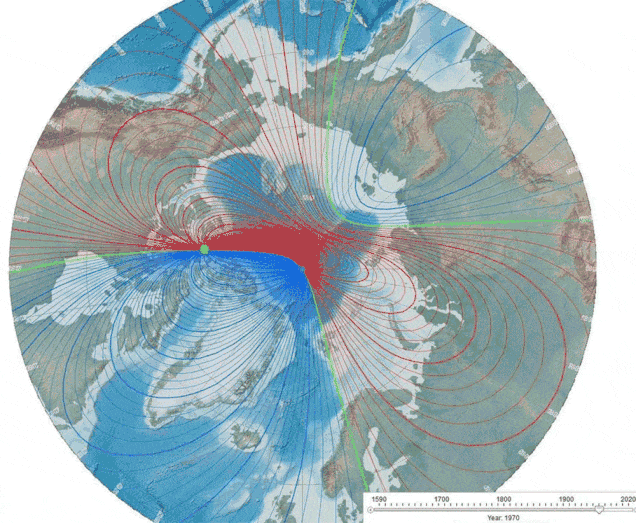Minute-by-minute, what would happen if a solar SUPERSTORM hit Earth - as scientists warn one could strike us 'at any moment'
- READ MORE: The scary sound of Earth's magnetic field
If you've ever wondered what keeps space weather physicists up at night, it's this.
A solar superstorm, strong enough to cause an 'internet apocalypse', knock out satellites and cripple clean water supplies could hit Earth 'at any moment', experts have warned.
A solar flare of this magnitude last took place over a thousand years ago – well before the introduction of electricity.
But if it were to happen in modern times then it would burn out energy transformers, cause financial markets to crash and even trigger a terrifying aviation communications blackout, scientists say.
Water sanitation plants could be left without power, while food in fridges and freezers would quickly start to go off without electricity.
People flying at high altitude in polar regions would likely receive an increased dose of radiation, while our protective ozone layer could also suffer in the long run.
The only good outcome would be spectacular Northern Light displays, likely visible across the globe.
Here, we provide a step-by-step guide of what to expect if a solar superstorm hits.

A solar superstorm, strong enough to cause an 'internet apocalypse', knock out satellites and cripple clean water supplies could hit Earth 'at any moment', experts have warned (stock image)
Experts know about the previous extreme solar flare through close analysis of tree rings. In 2012, a PhD student called Fusa Miyake made an astounding discovery while studying very old Japanese cedar trees.
She noticed a huge spike in a type of carbon known as carbon-14 in a single year around 1,250 years ago.
Her team concluded that this spike must have come from something injecting a huge number of particles towards Earth – most likely a monster burst of particles thrown out by the sun.
The phenomenon is now referred to as a 'Miyake event', named after the researcher who first discovered it.
Mathew Owens, Professor of Space Physics at the University of Reading, told MailOnline how another Miyake event could cause havoc on Earth.
'It's exciting if you're a space physicist but worrying if you're a power grid operator,' he said.
'If we got something like Miyake again, we'd be looking at a lot of power outages as transformers would be burned out.
'If you imagine that on a large scale, that becomes really worrying. It's then very difficult to get the grid back online because these transformers take months to build and install.

If internet went down, financial markets such as the New York Stock Exchange (pictured) would crash

Airplanes would experience a terrifying communications blackout while passengers and crew flying at high altitude near the poles would experience increased exposure to radiation

Energy transformers could burn out if another Miyake event were to occur, leading to a loss of power and electricity. Pictured: Residents walk down a street during a blackout following the failure of a major power plant in Havana, Cuba, last year

NASA's Solar Dynamics Observatory captured this image of a solar flare – seen as the bright flash in the lower left – on Oct. 1, 2024. A flare of this magnitude would be miniscule compared to a Miyake event
'If you lose power, you lose internet and you lose even more basic things like clean water because the pumps need power to run and sanitation needs electricity.
'Even all our food would be affected, as we rely on refrigeration for more of our food now.
'So getting access to food and water becomes quite difficult if you lose power for a significant amount of time.'
Experts would only get about 18 hours of warning before another event of this magnitude took place, he explained.
It could also knock out satellites and cause financial markets to crash.
There would be serious implications for aviation, as their communications systems would go offline, he warned, and it's possible that airplane passengers and crew flying at high altitude near the poles could be exposed to increased levels of radiation.
If it were to occur again, a Miyake Event would likely be at least 10 times more powerful than another havoc-wreaking solar phenomenon which took place in 1859.
Known as the Carrington event, it was the most intense geomagnetic storm in recorded history, triggering awe-inspiring auroras across the globe – including in the tropics.

The only benefit to an extreme solar flare would be spectacular Northern Light displays, like this one pictures in Fairbanks, Alaska
However, it also caused telegraph systems to go haywire, with historical reports of sparks showering from telegraph machines, operators receiving electric shocks and papers set ablaze by the rogue sparks.
Professor Owens said it's impossible to know what kind of impact a Miyake event would have on human health.
'The level of radiation from the Carrington event would have been the equivalent of receiving a few chest X-rays,' Professor Owens said.
'You'd avoid that if you could, but it's not the end of the world for you.'
The possibility of another Miyake event has been the subject of discussion within science circles for the last few years.
In a 2022 study, published in the journal Proceedings of the Royal Society A, researchers from the University of Queensland said: 'If a Miyake event were to occur today, the sudden and dramatic rise in cosmic radiation could be devastating to the biosphere and technological society.
'It is therefore concerning that we have little understanding of how to predict their occurrence or effects.
'A solar proton event orders of magnitude more powerful than any previously observed could cause an 'internet apocalypse' of prolonged outages by damaging submarine cables and satellites.
'The direct effects of energetic particles could even harm the health of passengers in high-altitude aircraft.
'It is also likely that the 774 CE event would have caused an approximately 8.5 per cent depletion in global ozone coverage, with a significant but not catastrophic effect on weather.
'The origin and physics of these radiocarbon spikes are therefore important not just for astronomers and archaeologists, but for risk planning and mitigation in general society.'







































































































































































































 First video emerges from INSIDE the Blue Origin space ship... as Lauren Sanchez, Katy Perry and Gayle King are seen in terror
First video emerges from INSIDE the Blue Origin space ship... as Lauren Sanchez, Katy Perry and Gayle King are seen in terror